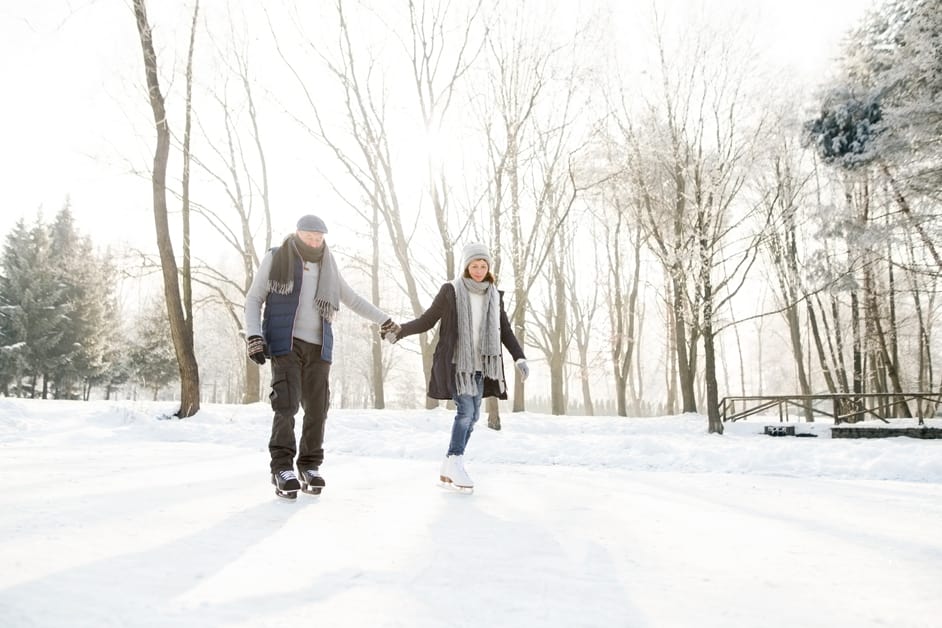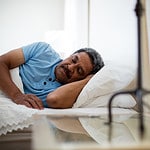Understand Your Pain
Knee arthritis pain can be intense when it’s cold. This stops you from being able to move around. To help with this, understanding your pain is important.
In this section, we’ll explain the usual causes and treatments for arthritis in the knee. We’ll also give some useful tips to reduce the pain:
Learn about the different types of arthritis
Arthritis is an inflammation of one or more joints. Different types exist, so understanding them helps you get the best treatment.
- Osteoarthritis (OA) is common and happens when cartilage between bones wears down, leading to pain and stiffness in weight-bearing joints like hips and knees.
- Rheumatoid arthritis (RA) is an autoimmune problem, where the immune system harms its own tissue, causing swelling, heat, and fatigue.
- Gout is caused by too much uric acid, and leads to pain and swelling in big toe, knee, or elbow joints.
- Psoriatic arthritis (PsA) happens when the immune system attacks healthy tissues, causing pain around the joints, and patches of red skin with silver scales. PsA can also affect the spine, leading to back pain and difficulty with daily activities.
Recognize the symptoms of knee arthritis
Knee arthritis is an issue experienced by many. Comprehending the associated pain and symptoms can aid in identifying the condition and achieving relief.
The most frequent symptom is pain with activity. Swelling and tenderness around the joint may also be present. The knee can become stiff or locked, which hinders movement. Popping, grinding, or crunching noises may be heard when the joint is moved.
If any of these symptoms are experienced, speaking to a doctor is recommended. Early diagnosis can help better manage the symptoms so future pain and immobility is avoided. Depending on the situation, your doctor may advise lifestyle changes such as weight loss or physical therapy. Medication or injections to reduce inflammation may also be suggested.
Prepare for Cold Weather
Winter can be tough for those who experience knee arthritis pain. The chill can increase the unease. Preparing ahead is key to keeping comfy during Winter. Here are some tips to help cope with knee arthritis pain in cold weather:
Wear warm, protective clothing
When the temperature goes down, bundle up in warm, protective clothing to avoid joint pain. Compression stockings, gloves, and belts help hold in body heat, reduce swelling, and keep you warm.
- Drink plenty of water to help blood circulation, even when it’s cold.
- Wear layers of loose-fitting clothes. This traps body heat better than tight clothing and you can remove layers as you get hotter throughout the day.
Invest in a knee brace
Cold weather can worsen knee arthritis pain. Investing in a knee brace can help. It provides support for the joint, reduces pressure on painful areas, and keeps the joint stable. It’s a good way to prepare for cold weather.
Make sure the brace is of high quality. It should fit properly and provide adequate compression. It must also be flexible enough for full range of motion. Check if the material is suitable for winter use. Breathable material is best, so skin can breathe and not sweat during outdoor activities.
Use a hot water bottle or electric heating pad
People with knee arthritis often predict cold weather will cause more joint pain. So, treatment plans must be adjusted to fit individual needs. Heat is often suggested for this type of pain. It can reduce swelling and improve circulation. Hot water bottles and electric heating pads are two ways to apply heat. When using these, avoid automatic shut-off features. If directions are followed correctly, it can help with knee arthritis symptoms. Always talk to a medical professional before changing medication or if side effects such as burning occur.
Exercise Regularly
Exercising is one of the best solutions to relieve knee arthritis pain in cold weather. This can help reduce inflammation, stiffness, and improve daily function. You can do different types of exercises like walking, swimming, cycling, and even low-intensity stretching. These exercises can also strengthen the muscles that are around your joints. Plus, it can improve coordination and balance.
Low impact exercises to keep your joints moving
Low impact exercises can assist in improving your mobility and reduce the joint pain connected to knee arthritis. When selecting an exercise, take into account activities that are low impact and put minimal strain on your joints. Examples include walking, cycling, light weight training, water aerobics, and yoga.
Walking is one of the top forms of exercise for those with knee arthritis. It increases the range of motion in your joints, strengthens muscles to better stability, and lowers the risk of injury. Additionally, it is a great way to get outside when it’s cold.
Cycling is another non-weight-bearing substitute. You can take a cycle inside on certain spin bikes or use outdoor paths far from traffic. Light weight training can also be beneficial. Use correct form and start with smaller weights at lower repetitions until your strength increases.
Water aerobics classes are great for those who have trouble walking. The warm, controlled temperature and buoyancy of the water help reduce stress on the joints. Lastly, yoga helps stretch and lengthen muscles. It also improves balance, circulation, and posture. This is useful for dealing with knee arthritis pain during cold weather months when outdoor activity may be hard or uncomfortable.
Stretching and strengthening exercises
Stretchin’ and strengthenin’ exercises are important for helpin’ with knee arthritis pain durin’ cold weather. Stretchin’ can improve range of motion, keep muscles flexible and lubricate the tissues. Strengthenin’ exercises can reduce pain, improve muscle balance and joint stability. Some examples:
- Stretchin’ –
- Side-lyin’ quadriceps stretches
- Hamstring stretches, usin’ a towel to pull one leg towards chest
- Calf stretches, pressin’ on heel firmly at wall or chair
- Strengthenin’ –
- Hip ab/adductor resistance bands or machine
- Resistance squats, legs apart
- Partial lunges, stayin’ upright and findin’ balance
Consider physical therapy
Physical therapy is a must in managing knee arthritis during winter. It can reduce joint stiffness, pain, and increase range of motion, coordination, and balance. You will gain the confidence to do day-to-day activities safely.
A physical therapist can recommend exercises to keep muscles flexible and to improve joint stability. They may provide an aerobic activity program that is safe for your knees and helps maintain overall health.
If you have severe or chronic knee arthritis pain, aquatic therapy can be useful. Swimming or using a stationary recumbent bike can make exercising with arthritic joints more comfortable. Your physical therapist can recommend exercises that are right for you:
- Swimming
- Using a stationary recumbent bike
Practice Self-Care
Practicing self-care is essential for lessening the discomfort of knee arthritis in cold weather. Self-care tactics can help you control and lessen the pain. They can also stop the condition from getting worse.
Self-care may include:
- Exercising
- Stretching
- Using heat and cold therapies
- Eating healthily
Incorporating these strategies into your routine will reduce knee arthritis pain when it’s cold.
Take regular breaks
Practicing self-care for knee arthritis during cold weather is essential. Take regular breaks to reduce ache and fatigue in your joints. Try relaxation techniques, like deep breathing exercises. This can help reduce stress which often contributes to joint pain.
Warm up your muscles with a hot water bottle or heating pad before and after activities. Take short walks and stretches to keep muscles flexible. Dress appropriately with breathable layers. Choose materials like cotton, synthetic blends, or wool. Wear supportive shoes with padding around the ankles and heels. This provides best support and cushioning for your knee areas when walking. Protect them from damage caused by inappropriate footwear!
Get enough rest and sleep
Rest and sleep are vital for keeping up energy and handling stress. It’s especially significant to take care of yourself in chillier weather to reduce pain and inflammation from knee arthritis. Aim for seven hours of shut-eye each night for the best recuperation.
Allow yourself time during the day to relax. Put in short breaks throughout the day to do deep breathing, stretching, or spending time outdoors. This increases oxygen-rich blood in your body, avoiding tightness and raising load-bearing strength in bones and muscle tissues around the joints.
Make use of relaxation techniques such as guided imagery or muscle relaxation exercises to diminish pain from knee arthritis in cold weather. Do these calming activities every day – they will settle your mind while loosening tight muscles all at once!
Eat a healthy diet
Eating a healthy diet is extremely important for managing pain. Omega-3 fatty acids and berries are known to have anti-inflammatory properties, so these should be included in your diet. Avoid processed versions, as they may contain additives that worsen the symptoms of knee arthritis.
Hydration is also key – drink plenty of water throughout the day. Lean proteins, like fish or chicken, are an excellent source of energy. Eating dark green leafy vegetables (e.g. kale or spinach) will provide your joints with vital nutrients without increasing your pain levels due to overconsumption of carbs or sugary snacks.
Seek Professional Help
Knee arthritis is a widespread issue. Cold weather can make it worse. People with knee arthritis may experience intense pain. To manage this pain, seek professional help. Examples are: physiotherapy, occupational therapy, or a mix of both.
Let’s learn how these treatments can help manage knee arthritis pain. Doing so could let you be more active.
Talk to your doctor about medications and treatments
When it comes to mental health, talking to your doctor is key. This helps in getting an accurate diagnosis and discussing treatment options. Medications like SSRIs or antipsychotic drugs may be suggested, depending on your diagnosis. Side-effects and risks must be discussed.
Other treatments such as CBT or DBT are possible. Diet and lifestyle changes, exercise, mindfulness techniques like meditation or yoga could be included as well. Discuss with your doctor to decide what fits your needs best.
Consider alternative therapies such as acupuncture or massage
Non-medicinal therapies can help with knee arthritis pain and its related symptoms. An acupuncturist or massage therapist could be consulted to reduce the aching and inflammation.
- Acupuncture is an old Chinese practice which involves tiny needles inserted into certain points on the body. Endorphins, hormones that fight pain, are released. Inflammation in the knee joint is also reduced.
- Massage therapy can assist with pain relief. Muscles near the arthritic joint can be eased with soft tissue massage. Trigger points and blood circulation can be improved with deep tissue work, leading to less stiffness and swelling in the joint.
Alternative therapies are available too, such as hydrotherapy, yoga, tai chi and pilates exercises. These can provide relief during cold weather. The relief can be long-term if carried out regularly and under supervision.
Make sure you have a support system
A reliable network of people, such as family, friends, and healthcare providers, can aid in handling arthritis pain in the knee. Speak to those who comprehend the physical and emotional impacts of arthritis. Ask for their advice on managing the symptoms and staying active in cold weather. Don’t be embarrassed to seek professional help if needed.
A doctor, physical therapist, or other healthcare provider can advise on what is causing the knee pain and the best treatment methods. They can also offer tips on lifestyle changes that may reduce the discomfort during cold weather.
Furthermore, don’t forget about emotional support from counselors or organizations that focus on arthritis and chronic pain management. Having access to emotional support systems may be helpful for those suffering from knee pain due to arthritis.
Frequently Asked Questions
Q1: What are some tips for coping with knee arthritis pain during cold weather?
A1: There are several tips for managing knee arthritis pain during cold weather. First, wear warm clothing that is supportive and comfortable. Additionally, consider using a warm compress or taking a warm bath or shower to help reduce pain. Heat packs, heating pads, and warm wax can also help. Lastly, speak to your doctor about taking non-steroidal anti-inflammatory drugs (NSAIDs) or other medications to reduce inflammation and pain.
Q2: Are there any exercises that may help with knee arthritis pain?
A2: Yes, there are exercises that may help with knee arthritis pain. Gentle stretching exercises and low-impact activities like walking, swimming, and yoga can help increase flexibility and reduce pain. Additionally, strengthening exercises may help reduce the stress on your joints. Speak to your doctor or physical therapist about the best exercises for your condition.
Q3: Are there any lifestyle changes I can make to reduce knee arthritis pain?
A3: Yes, there are lifestyle changes you can make to reduce knee arthritis pain. Losing weight can help reduce the stress on your joints. Additionally, eating a healthy diet, quitting smoking, and avoiding activities that put too much stress on your joints can also help. Speak to your doctor about any other lifestyle changes you can make to reduce your knee arthritis pain.





